This review, plus a detailed analysis of “Modern British” dining, has been much anticipated for some while, by me at least. The Blue Anchor is a former pub turned bar, restaurant and small hotel that I pass by on a very regular basis from my house in nearby Tiptree.
Not so long ago, this was a slightly gloomy pub serving pub meals (even pie and mash with jellied eels) plus a moderately decent pint of real ale to locals who largely came to watch football matches. But then there was a takeover and major building works to convert the Anchor to a very different type of hostelry. As the conversion was progressing I thought to myself every time I drove past: I will dine there and review! So what better than to go there to celebrate the birthday of my good friend Elaine?
Knowing it to be part of the Blue Group helped. This is a small chain, whose distinguished restaurants, including the Blue Bridge at Writtle (which I have passed frequently en route to rehearsals and show nights), the Blue Boar at Abridge and the William B at Hatfield Peverel, are a feature of Essex country life. All have a fine reputation, though as yet the Blue Anchor is the first at which I have eaten. On this occasion it was dinner, though they also do a tempting line in breakfasts and Sunday lunches. There will be time, there will be time.
The conversion is most pleasing, outside and in. On the exterior walls the more unsightly modern beams have been removed and the structural beams in this 15th Century Inn are neatly repainted in a colour I find difficult to describe – somewhere between dark beige and grey, but it works well. Inside it has followed the pattern of the other Blue restaurants by combining the old and the new in a vogueish style, souped up through the inclusion of a cocktail bar. Courtesy of the BA’s website:
The open fire and fifteenth century exposed beams are only a small part of the spectacular features of this attractive restaurant. Contemporary features have been added to the traditional backdrop to make you feel at home.
Indeed, beams and walls have been painted and a small insignia added to some corners, pithy quotes and extravagantly curled wallpaper applied to selected surfaces (quotes on walls are a common trait nowadays, it seems), and quirky touches added (eg. a metallic stag’s head, a leaping porcelain salmon.) Tables and chairs are the modern touch, though the tables seem a tad flimsy and plastic for the purpose, certainly out of keeping with the rest of the decor.
But if I have an issue it’s that the chandeliers and wall lights (electric faux-candles laced with paste crystals) are dazzlingly bright but also leave dark spots, possibly by design. I’d urge the Blue Group management to revisit the lighting issue, since that does detract from the dining experience, particularly when you can’t see the faces of fellow diners due to their being drowned out by full beam from the walls. Next time I’ll wear shades, but some lighting that is lower key but more consistent would be very helpful.
Meanwhile, the menu is described thus:
Be sure to come in and experience the tasty and wholesome food here at The Blue Anchor, with its well-defined modern British menu prepared for you by Chef Stephen Bone and his team, accompanied by our front of house staff offering first class, relaxed and friendly service…. The mouth-watering food and extensive choice excels expectations and is sure to please all. It will undoubtedly be an eatery you will visit frequently.
In practice, that extends to “Modern European” and indeed to “Modern Global” rather than simply British, given that the likes of olives, bruschetta, satay, tempura, cajun spices or pasta are not strictly British in the traditional sense, unless you define British in the wider, multicultural sense, such that our national dish is not roast beef and two veg but spaghetti bolognaise and chicken tikka masala. At one point some such delicacies were Empire food (think kedgeree and many more.) Thanks to the joys of affordable travel we have all subsumed culinary influences from east to west, north to south, and built them into our national diet on a mix-and-match basis: rogan josh with chips, chilli with pasta, you get the picture.
British cuisine is now what you want to make it, and modern British should take markers from the best of fresh, seasonal local ingredients, signposts from our historic repertoire of dishes, touches of flair from the best of modern techniques and presentational tricks and clichés (the vertical stack surrounded by blobs of sauce and acres of white plate, for example, which I personally consider well past its sell-by date), plus interpretations of the British global influence in a tasty melange to tickle our sometimes jaded palates. The flipside to that particular coin is that we are more aware of what is good and less good. We are more critically aware of what we eat, which, given some of the appalling and inedible restaurant fare we tolerated without complaint over many decades, is no bad thing.
Restaurants need to be on their toes nowadays, since we look to the likes of the Blue Group to raise our dining standards and give us both flavoursome meals and a conducive atmosphere to justify prices which can be described as rural Essex rather than London. Clearly there is a price point the Blue team are aiming for, reflected in their style and menus, to appeal to the dining public of Essex.
But one more twist in this evolutionary saga is that everybody had the same idea. Many restaurants with similar ambitions started to sell very similar dishes as chefs and managers migrated from one establishment to the next. The dishes then become commoditised and began to head downmarket to pub menus via vacuum pack catering suppliers such as Brakes Brothers (an organisation that with my foodie hat on I detest with a passion.)
Take belly pork as a prime example. Not too many years ago you couldn’t sell belly pork in a restaurant for love nor money. It was deemed a cheap, downmarket ingredient, sold to the poor the way oysters were in Victorian England. My mother, ever the thrifty cook, used to make it when we were kids, coated in stuffing and grilled. As a student I used to buy it in rashers from market stalls for about 20p per pound, the idea having been passed down from mother to son.
Now belly pork has been rediscovered as a mouthwateringly tender and flavoursome cut (ie. meat marbled with fat is tasty!), crispy crackling on the outside, perfect for slow cooking, a comfort food for a new generation. The result is that belly pork has now become ubiquitous, sold at every aspiring gastropub and “Modern British” restaurant, each with their own subtle interpretations in order to demonstrate cheffy skills and value-add. This is the version spun by Mr Bone at the Blue Anchor:
Slow roasted pork belly served on a bed of wholegrain mustard mash with savoy cabbage and bacon, finished with maldon salt crackling twigs and thyme jus
Of course we still love our steaks, albeit a million times better than the days when Berni Inn was considered the height of tasteful dining out, but rather than gammon and pineapple or mixed grill there is belly pork or sea bass, to name but two common themes on modern menus. For tomato soup, prawn cocktail and grapefruit on the starter menus, read butternut squash soup, grilled goats cheese and cured fish. Differentiating yourself while staying in the comfort zone for customers is the new challenge for restauranteurs in what remains a tricky business, depending for success on bums on seats.
In fairness to the Blue Anchor, this difficult tightrope act has been pulled off with some aplomb. Original touches shine through the menu, though belly pork, rib eye steak and good old fish & chips all put in an obligatory appearance. My usual practice is to select from the more esoteric end of the menu and try something I’ve not previously eaten, though that becomes increasingly difficult the older I get. In this case, having written extensively about it I had no real choice but to try the belly pork, did I? For main course, my companion chose another brasserie favourite that now adorns menus everywhere, the lamb shank, served thus:
Marinated and slow roasted shank of lamb served on creamy mash potato served with a rich red wine gravy and a panache of vegetables
“Panache,” you will recall, is defined not as a collective noun for vegetables but as follows:
I will assume the intention was to suggest the vegetables were flamboyant, of which more in a moment. But first the drinks, which included an aperitif of G&T (Hendricks from the list offered), followed by a succulent and aromatic gavi di gavi that would have gone beautifully with fish mains. I’d have chosen one of the more interesting reds, given our main courses, but it was Elaine’s birthday so white it had to be.
For starters we selected respectively potted crab and grilled goats cheese. The latter came in a modest circle atop fine slices of beefsteak tomatoes, with finer slices of parma ham scrunched around the cheese like handles. For flavour, Elaine’s goat cheese was a fine example of its kind, going down so well I managed but a small taste. It came on an amusing plate with nipped in sides, which I suppose is designed to provoke conversation inbetween courses. It succeeded.
The crab seemed closer to the consistency of rillettes than potted shrimps, indeed it did a fair impression of crab past from a jar when you were a kid. Thankfully its crabby authenticity was undeniable, especially the small chunk of shell thrown in for good measure. It came with a tasty “gherkin relish” (cubed, dressed pickled gherkins with onion), two fingers of toasted brioche (needed more!) and the perfunctory garnish, plus a squiggle of balsamic-flavoured syrup and wedge of lemon standing vertically from the ramekin.
So to the mains, both of which came in wide bowls and both built vertically from a solid base of mash. In Elaine’s case she spoke highly of her lamb, which is not a difficult dish to get right, though her mash was under-seasoned and her wine gravy (at least they didn’t call it “jus“) a tad under flavoured for her tastes.
You couldn’t describe my mash as under-seasoned. It came with a riot of flavours and could have been today’s ironic twist on bubble and squeak for tomorrow’s breakfast. It was topped by a round slab of tender pork with the “twig” of crackling also standing to attention, to one side. The much-reduced thyme jus (dammit!) lurked in the shadows of the bowl, and was, sad to say, not the robust and flavour-packed sauce for which I had hoped. I appreciate that it is easy to overpower some ingredients, but perhaps the chef should be adding a touch more poke to sauces served with solid and meaty mains?
Oh, you want to know about the panache of vegetables? Well, truth be told they were plain and ordinary steamed veg in a separate bowl. Nothing flamboyant at all, truth be told. Shame, or maybe that’s what the paying public expect and demand?
The dessert menu is remarkable for one omission: no cheese board in sight. This, said our friendly and efficient waitress, is because nobody ordered it at the William B, though everyone is asking in Feering so they are now talking to their cheese supplier with a view to providing a tasty morsel or two. Seems the residents of Feering and hereabouts are greater cheese eaters than those in Hatfield Peverel.
Too bad, but of the sweeter desserts we chose a pavlova with red berries (about which Elaine, meringue lover, raved) and a mango-flavoured creme brûlée The latter was a pretty good brûlée, though for me the blobs and squiggles of mango sauce go somewhat over the top, and strawberries are of course unseasonal in November. Sometimes less is indeed more, and while presentation might be important I would personally sooner have a small puddle than a palette of symmetrical splodges. Simplicity works better in the longer run, in my humble opinion.
The bill for two came out at a pretty reasonable £88 excluding service, and credit to the Blue Group for not leaving the credit card tab open for gratuities. As it happens, service was excellent and well deserving of a cash tip, though this experience proved once again my hypothesis that waiters and waitresses are nowhere to be seen as soon as you want to pay; it never fails, that test.
In summary, this restaurant and indeed chain is one I would and will happily return to, regardless of it being very local to me. It does many things well and deserves the plaudits and many bums on seats that it has achieved. There are things it could do better, of which the lighting and the cheese board are the most urgent.
For Chef Bone in the kitchen, a pretty good effort too, though I would prefer him to cut down on the length of the menu and focus on beefing up the best dishes for robustness of flavour. Let the food speak for itself.
But overall, thank you Blue Anchor – Elaine enjoyed her birthday dinner greatly.

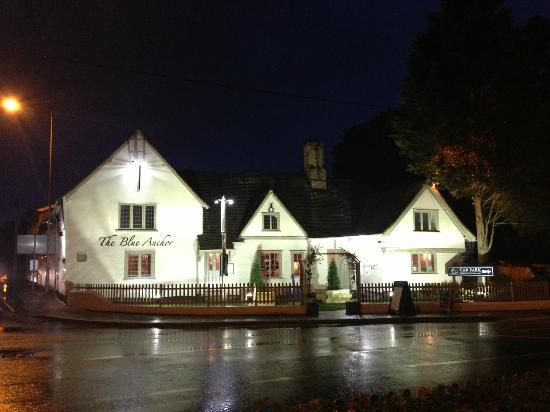

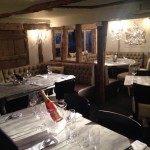


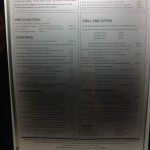
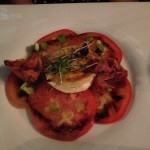

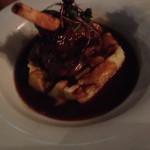


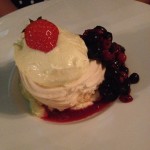

I was able to find good information from your blog articles.